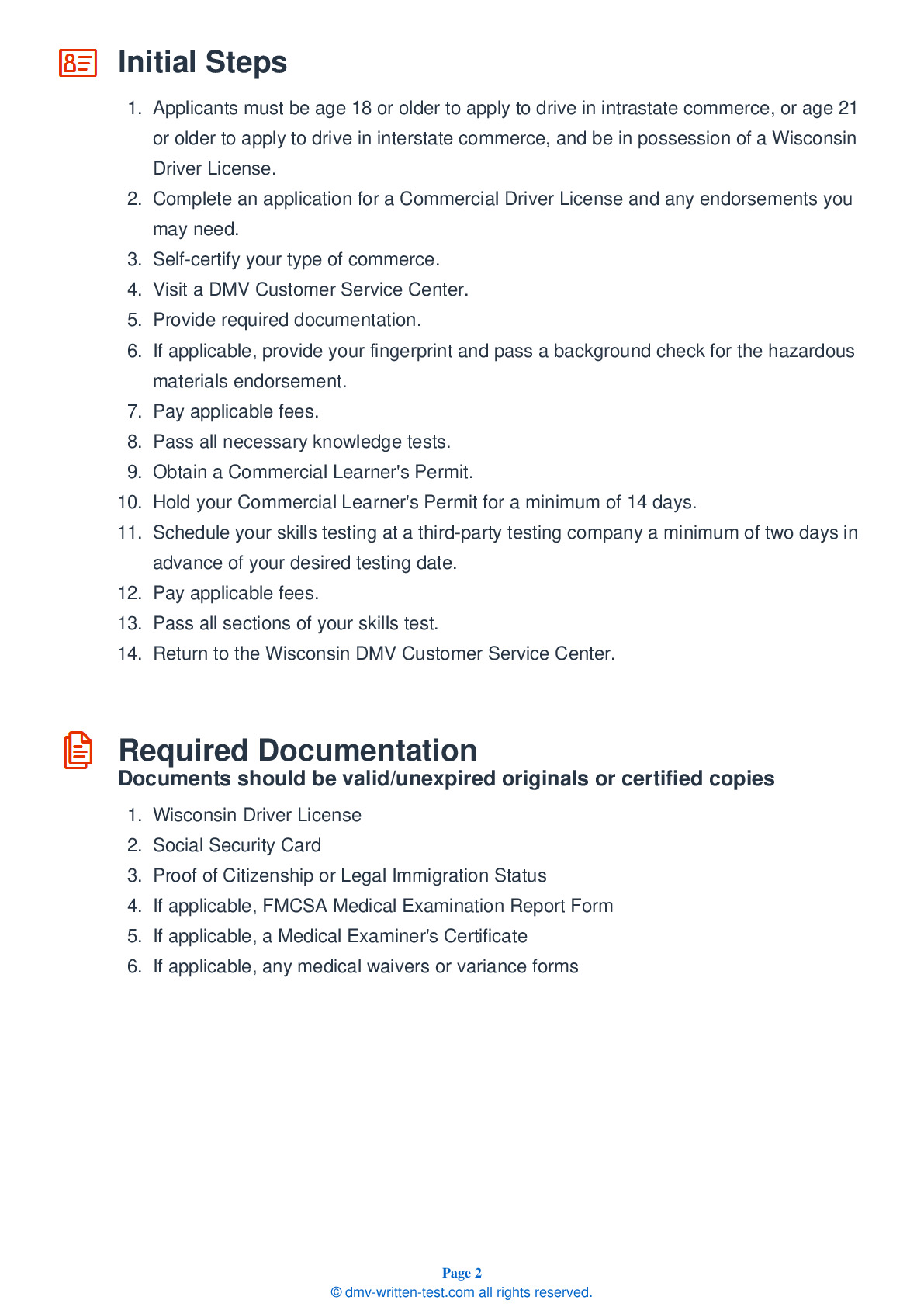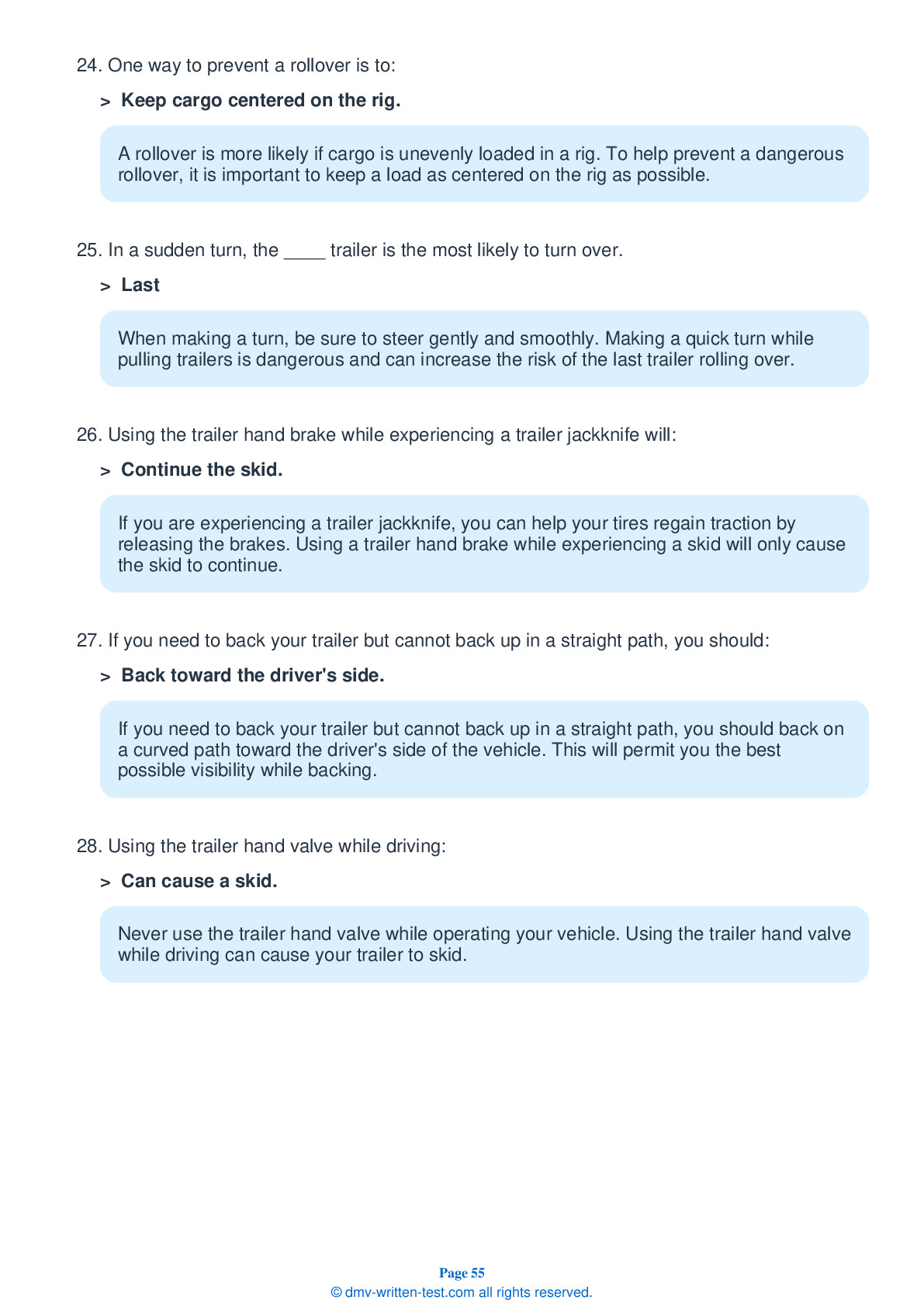Air Brakes
This endorsement is required for driving a vehicle with air brakes. To receive this endorsement, applicants must pass a written test. The test consists of 25 multiple choice questions. Each question has three or four answer choices. To pass, the applicant must answer at least 20 questions correctly. Test questions come from the Wisconsin Commercial Driver’s Manual. Questions come from the chapter covering: Air Brakes. The Air Brakes endorsement may be used with the Class A, B or C CDL.
Number of Question
Passing Score
13. Before driving a vehicle with air brakes, you should ensure that the ____ come on automatically when air pressure falls below 45 psi.
Explanation
Before driving a vehicle with air brakes, you should ensure that the spring brakes come on automatically when air tank pressure falls to a level between 20 and 45 psi. You can do this by chocking the wheels and releasing air from the braking system by stepping on and off the brake pedal. Once the pressure levels drop to an unsafe level, the parking brake valve should pop out and spring brakes should come on.
14. Anti-Lock Braking Systems (ABS):
Explanation
If equipped, ABS is in addition to a vehicle's normal braking system and does not increase or decrease the braking power of any other system. ABS only activates when a vehicle's wheels are about to lock.
15. If using spring brakes when hauling a heavy load, a complete stop will:
Explanation
Spring brakes do not work on all axles. If your vehicle's spring brakes activate due to low pressure in an air brake system, your vehicle will need a longer distance to stop than usual, especially if you are carrying a heavy load.
16. While driving downhill, you should brake until you reach a speed that is ____ below your safe speed, then release the brake pedal.
Explanation
While driving downhill, you should hold down the brake pedal until your vehicle reaches a speed 5 mph below your safe speed, then release the brake pedal. Repeat this process.
17. When only the tractor is equipped with an Anti-Lock Braking System (ABS):
Explanation
If a tractor is equipped with an Anti-Lock Braking System (ABS) but the trailer is not, the risk of jackknifing will be reduced and the driver should still be able to maintain steering control. If only the trailer is equipped with ABS, it is less likely that the trailer will swing out to one side.
18. What does an air compressor do in an air brake system?
Explanation




